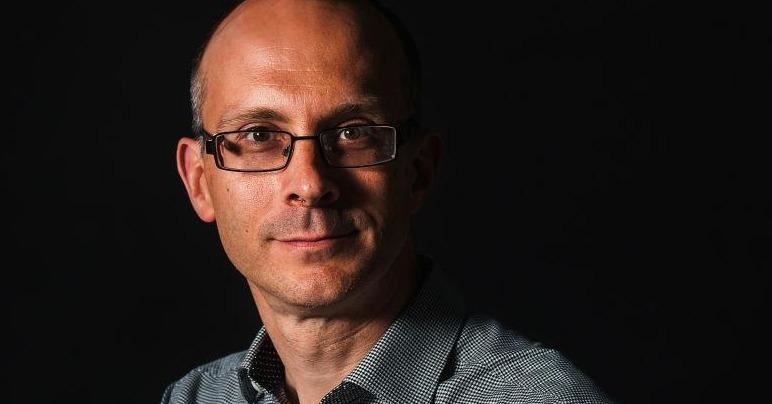In this video, economist and author Tim Harford teaches an important lesson about succeeding at failure through the story of psychologist Leon Festinger’s infiltration of a cult led by Dorothy Martin in 1954. Festinger studied the cult members’ reaction to Martin’s false prophecy that the world would be destroyed the following day.Harford uses this example to illustrate the concept of cognitive dissonance. All of us, he says, are at risk of cognitive dissonance in a small way whenever we make a mistake, particularly a mistake on something that’s important to us. We are most at risk when our self-image is under threat. Harford then walks us through an antidote to this phenomenon — to prepare to be a successful failure. To do that, Harford explains, we need to have a successful mindset and a plan of action for learning from our mistakes.
Fail Constructively: Learn From Your Mistakes, with Tim Harford, Economist and Author, Adapt: Why Success Always Starts with Failure
A Successful Mindset
A few days before Christmas 1954 a group of ordinary people gathered together in a house in Chicago with a very unusual belief: they believed that at midnight aliens would come, collect them and take them to the planet Clarion. And the reason that aliens from the planet Clarion were going to collect them was because the world was about to be destroyed. It would be destroyed at dawn the next day. So the cult gathered together. They were under the influence of a woman called Dorothy Martin who was receiving messages from these aliens. And they waited.
Now what’s interesting about this particular group of people is that they had been infiltrated by a psychologist called Leon Festinger, and Festinger wanted to know what would happen when these people were proved wrong. I don’t want to jump to the conclusion, but it turns out the aliens didn’t come. I’m sorry if that was a surprise. The aliens didn’t come, the world wasn’t destroyed.
Festinger sat and watched as these, this group of people, true believers, sat around in a sitting room – midnight, no aliens, one o’clock, no aliens, two o’clock, no aliens, three o’clock, no aliens – absolutely stunned. And at four o’clock Dorothy Martin burst into tears, broke down, and then at half past four picked up a pencil and announced that she was receiving a message from the aliens and began to write. And the message was: because of the commitment of the group and their belief, the world was going to be spared, and it wouldn’t be destroyed. And so there would be no need for the aliens to come after all.
And then what Leon Festinger predicted happened. The cultists went out on the street and they began to spread the good news. They’d previously been very restrained but now they embraced their old beliefs more firmly than ever before. They sent out press releases. They phoned the newspapers. They wanted everybody to know.
Now why did they behave like this? Festinger said it’s because they had invested everything in their beliefs. They’d left their wives and husbands. They’d left their jobs. They’d given away their possessions. Everything was totally committed to being right. And when they were proved wrong, they couldn’t accept that they were wrong and so they just adapted their beliefs until they weren’t wrong anymore.
Now this idea is called cognitive dissonance. You may have heard of it. All of us are at risk of cognitive dissonance in a small way whenever we make a mistake, particularly a mistake on something that’s important to us, particularly when we’ve invested our reputation, when we’ve put money into it, when we’ve put time into it. That is when we are most at risk because our self-image is under threat. We find it really hard to separate the idea that, I made a mistake, I failed, I did something wrong, with the idea that, I am a failure, I am the kind of person who makes mistakes, I am the kind of person who gets things wrong.
And I think the first step in responding in a constructive way when you’ve made a mistake is to separate yourself from the mistake and to understand: you can be a person who made a mistake – that does not make you a person who will always make mistakes. And hold those ideas in your mind. And then you’ll be able to admit you got something wrong and start to, in a mature and forward thinking way, think about how to fix it.
How to Be a Successful Failure
Let’s talk about how to be a really successful failure, I mean, how to fail in a really exciting, productive, constructive way. And I think there are really three tricks to it. The first thing is to admit that since failure is around every corner -- we’re always making mistakes, if we try to do something interesting we’re gonna be making mistakes -- we need to generate lots of ideas. We need to be doing lots of things. We need to try lots of stuff.
Now it follows pretty directly that if you’re gonna try lots of stuff, you’re gonna fail at lots of stuff. Therefore, you need the failures to be survivable in some way. So whenever you’re trying a new experiment, whether it’s a new job, a new product, a new hobby, a new boyfriend or girlfriend – whatever it is -- you need to give some thought to what you’re gonna do if it doesn’t work out and how to minimize the downside as well as taking advantage of the upside. The biggest disasters in human history are always when people just assume that failure was impossible or they weren’t willing to contemplate it.
And the third thing – the third element that’s really important and easy to say but hard to do – is to have some kind of mechanism, some sort of feedback mechanism that tells you whether things are going well or not going well, tells you whether you’re succeeding or failing. And this could be all kinds of things. In the case of medicine and doctors and epidemiologists, medical researchers have built a huge infrastructure around randomized control trials and matter analysis and double blind just devoted to stopping them from kidding themselves that some new treatment is working when it’s really not. I mean, that’s sometimes what it takes.
But in everyday life often it’s simply a case of asking yourself what the markers for success might be. Or even simpler than that, just asking someone you can trust to give you a straight opinion. It could be remarkably hard to get people to give you an honest and constructive opinion. But that’s absolutely essential. What I’m talking about is not when you go up to somebody and say, “Was that all right? Was that working?” but when you go up to somebody and say, “Can you give me one suggestion for something I might do better?” People are so unused to being asked that question, you may not always get responses, but that’s the kind of feedback that you need if you’re going to fix your own mistakes.





